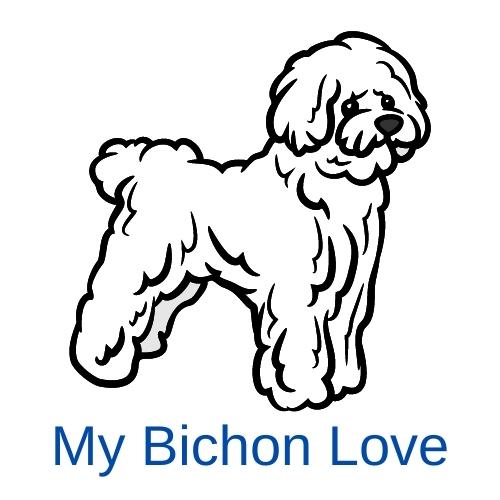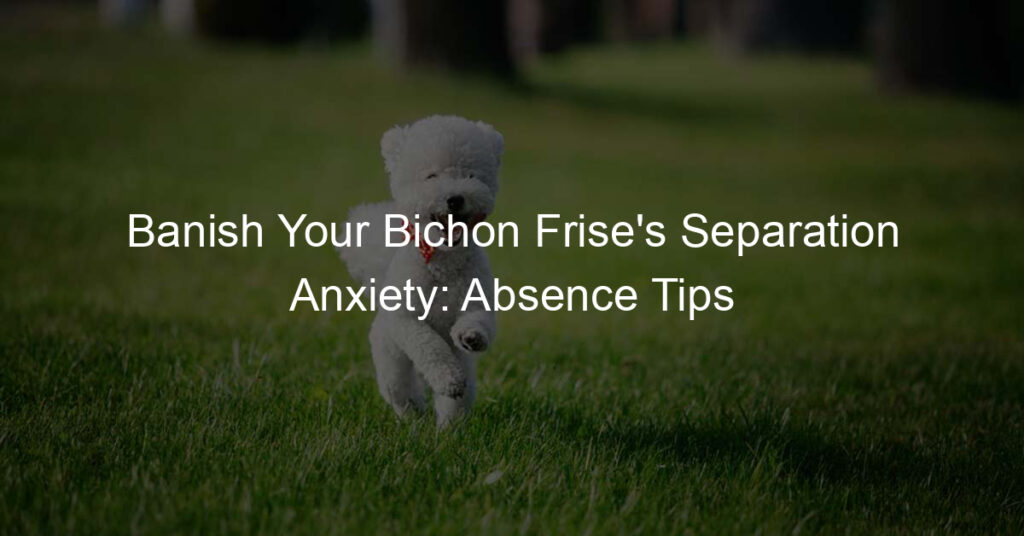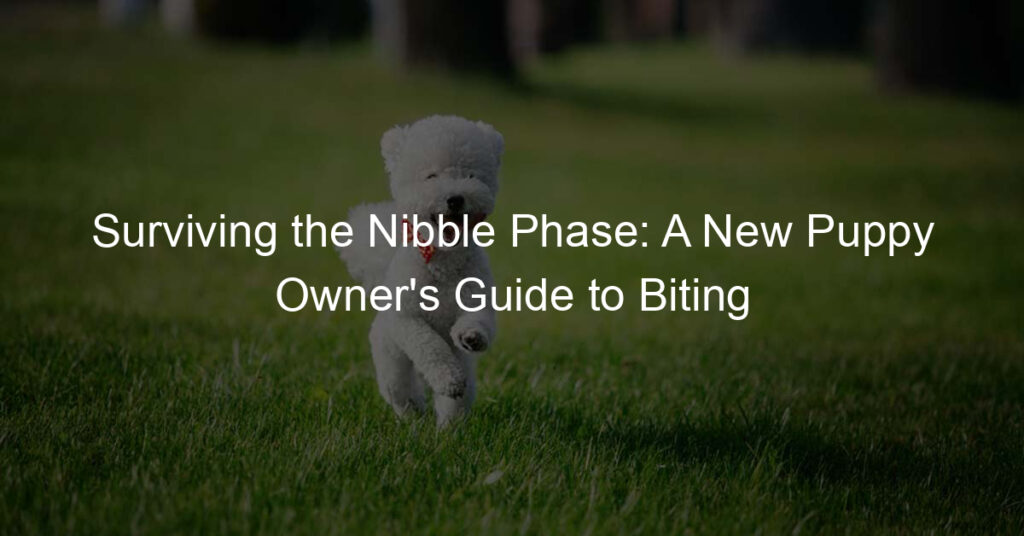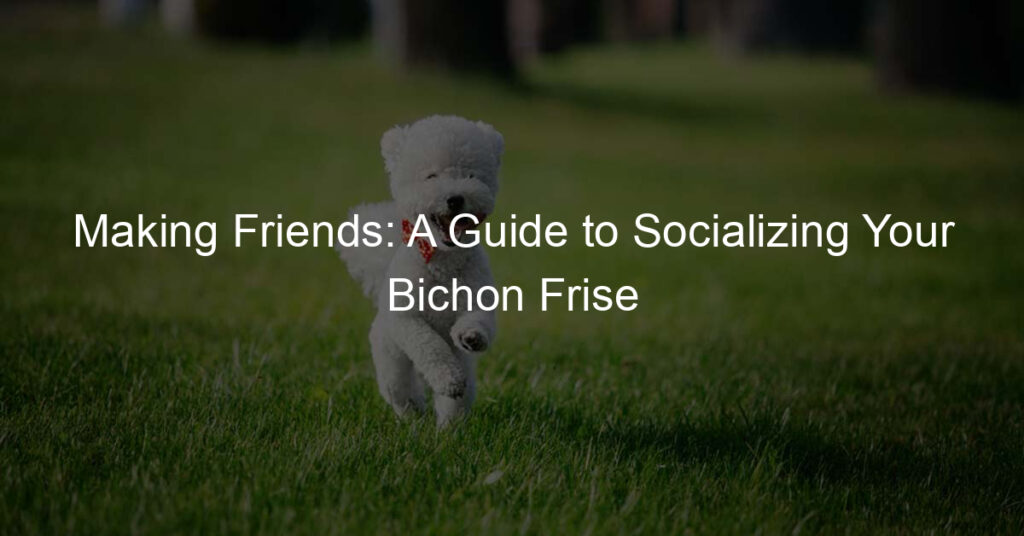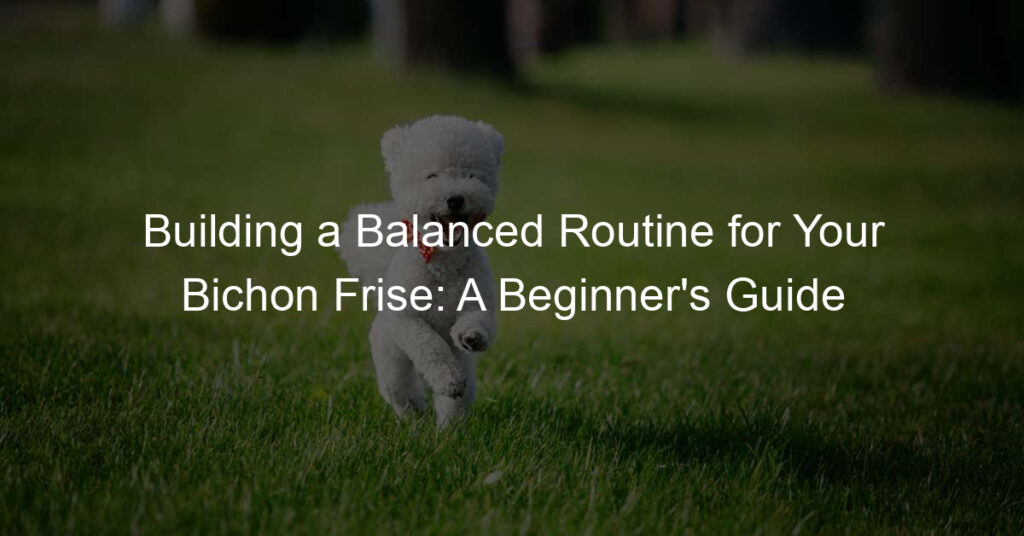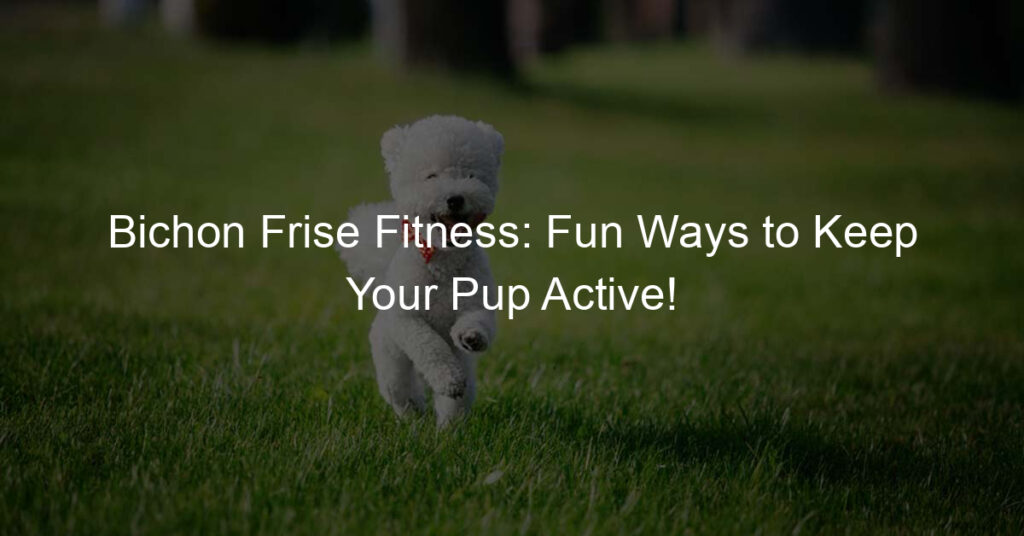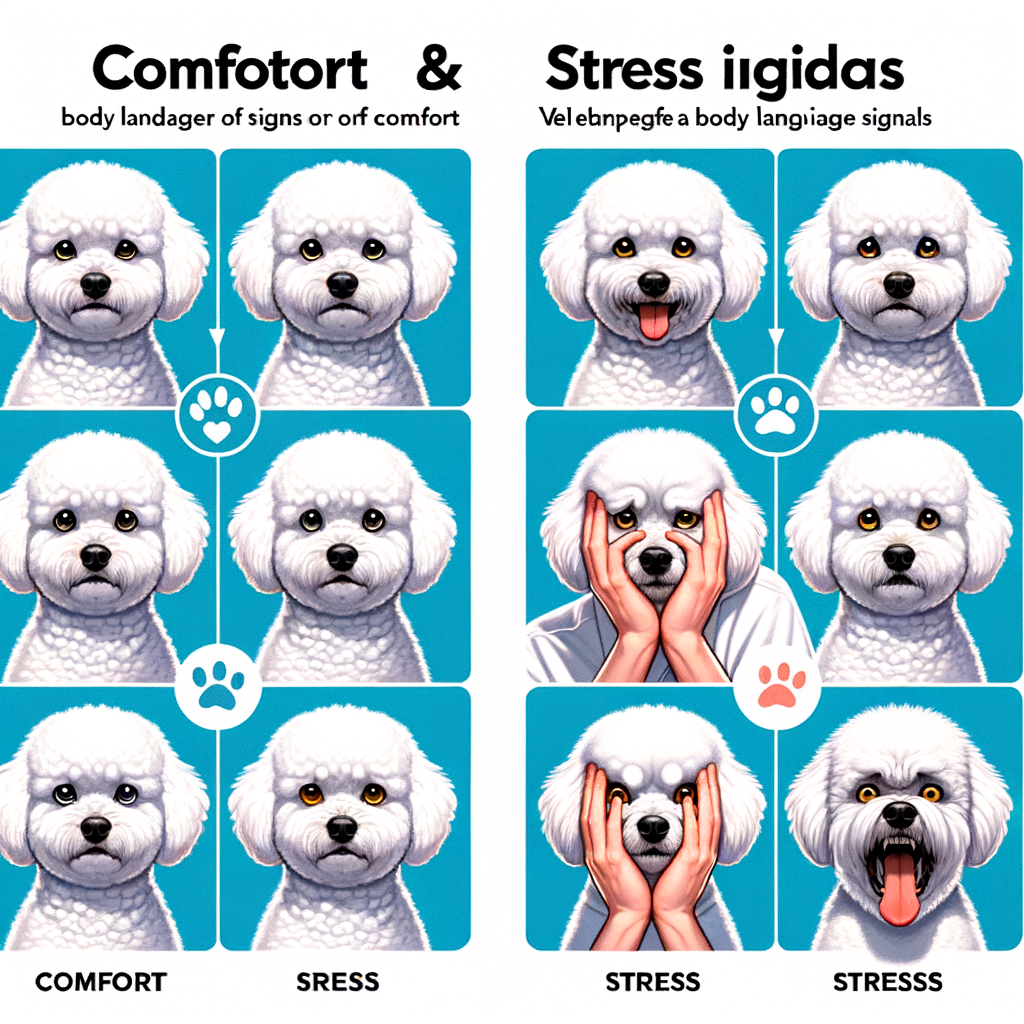
Introduction to Bichon Frise Behavior
Welcome to our comprehensive guide on understanding Bichon Frise behavior. This adorable breed, known for its fluffy white coat and cheerful disposition, has a unique set of behaviors that can sometimes be challenging to interpret. In this guide, we will delve into the importance of understanding these behaviors and provide an overview of common Bichon Frise body language.
- Understanding the Importance of Interpreting Bichon Frise Behavior
Interpreting your Bichon Frise’s behavior is crucial for several reasons. Firstly, it helps you to understand your pet’s needs and wants better. For instance, a wagging tail usually signifies happiness, while a tucked tail can indicate fear or anxiety. Secondly, understanding your dog’s behavior can help you to identify any potential health issues. Changes in behavior can often be the first sign of illness or discomfort.
Moreover, understanding your Bichon Frise’s behavior can strengthen your bond with your pet. Dogs communicate primarily through body language, and by learning to interpret these signals, you can respond more effectively to your dog’s needs, leading to a happier and healthier pet.
- Overview of Common Bichon Frise Body Language
Bichon Frises have a rich repertoire of body language that they use to communicate. Here are some common signals:
| Behavior | Meaning |
|---|---|
| Wagging Tail | Happiness or excitement |
| Tucked Tail | Fear or anxiety |
| Pricked Ears | Alertness or interest |
| Relaxed Body | Comfort and contentment |
Remember, these are just general guidelines. Each Bichon Frise is unique and may have its own individual ways of expressing itself. The key is to spend time with your pet and observe its behavior closely. Over time, you will learn to understand your Bichon Frise’s unique language, leading to a stronger and more rewarding relationship.
Understanding Dog Body Language
Understanding your dog’s body language is an essential part of building a strong and healthy relationship with your furry friend. Dogs communicate primarily through body language, and being able to interpret these signals can greatly improve your communication with your pet.
General Dog Body Language
Before we delve into the specifics of Bichon Frise body language, let’s first understand the basics of general dog body language. This will provide a solid foundation for understanding your Bichon Frise’s unique communication style.
- Importance of understanding dog body language
Understanding dog body language is crucial for several reasons. Firstly, it allows you to understand your dog’s feelings and needs better, leading to a happier and healthier pet. Secondly, it can help prevent potential issues or conflicts, as you’ll be able to identify signs of stress, fear, or aggression. Lastly, it can strengthen your bond with your dog, as effective communication leads to mutual understanding and respect.
- Common signs and their meanings
There are several common signs that dogs use to communicate. Here are a few examples:
| Sign | Meaning |
|---|---|
| Tail wagging | Generally indicates happiness or excitement, but the speed and direction of the wag can also convey different emotions. |
| Ears pinned back | Can indicate fear, anxiety, or submission. |
| Showing belly | A sign of trust and submission, often an invitation for a belly rub. |
| Growling | Usually a warning sign of discomfort or aggression. |
Remember, these are general signs and their meanings can vary based on the context and the individual dog’s personality.
Understanding your dog’s body language is a journey, and it’s okay if you don’t get everything right at first. The most important thing is to pay attention to your dog’s signals and respond with love and respect.
Bichon Frise Specific Body Language
Understanding the specific body language of a Bichon Frise can be a fascinating journey. These fluffy, friendly dogs have their unique ways of communicating. Let’s delve into the unique aspects of their communication and some examples of their body language.
- Unique aspects of Bichon Frise communication
The Bichon Frise, with its cheerful disposition and lively spirit, communicates in ways that are both charming and distinctive. They are known for their expressive eyes and animated body movements. Unlike some breeds, Bichons are very vocal and use a variety of barks, whines, and even howls to express their feelings. They also use their fluffy tails to signal their mood. A wagging tail usually indicates happiness, while a tucked tail can be a sign of fear or submission.
- Examples of Bichon Frise body language
Let’s look at some specific examples of Bichon Frise body language:
| Body Language | Meaning |
|---|---|
| Wagging tail | Excitement, happiness |
| Tucked tail | Fear, submission |
| Pricked ears | Alertness, curiosity |
| Relaxed ears | Contentment, relaxation |
These are just a few examples. Remember, every Bichon Frise is unique and may have its own special ways of communicating. The key is to spend time with your Bichon, observe their behavior, and learn their individual language.
Understanding your Bichon Frise’s body language will not only enhance your bond but also enable you to cater to their needs more effectively. It’s a rewarding experience that deepens the love and respect between you and your furry friend.
Bichon Frise Comfort Signs
Understanding your Bichon Frise’s comfort signs is crucial to ensure their well-being. Recognizing these signs will help you create a more comfortable environment for your furry friend.
Recognizing Comfort in Your Bichon Frise
Recognizing comfort in your Bichon Frise involves observing their physical and behavioral signs. Let’s delve into these two categories.
- Physical signs of a comfortable Bichon Frise
A comfortable Bichon Frise will have relaxed body posture. Their ears will be in a natural position, not pinned back or overly alert. Their tail will be relaxed, not tucked under or held high and stiff. Their eyes will be soft and relaxed, not wide and alert. They may also have a slightly open mouth with a relaxed, lolling tongue.
- Behavioral signs of a comfortable Bichon Frise
Behavioral signs of comfort include a willingness to engage in play and a general sense of contentment. A comfortable Bichon Frise will be curious and interested in their surroundings, but not overly alert or anxious. They may also show affection towards their owners and other familiar people. A comfortable Bichon Frise will also have a good appetite and regular sleeping patterns.
Remember, every Bichon Frise is unique and may show comfort in different ways. The key is to understand your pet’s normal behavior and look for signs that indicate they are relaxed and comfortable.
Interpreting Bichon Frise Comfort Signals
Understanding your Bichon Frise’s comfort signals is crucial in building a strong bond with your furry friend. These signals can help you know when your pet is relaxed and happy, which is essential for their overall well-being. Let’s explore how to interpret these signals and look at some examples.
- How to interpret Bichon Frise comfort signals
Interpreting comfort signals from your Bichon Frise involves paying close attention to their body language. Here are some signs to look out for:
- Relaxed body: A comfortable Bichon Frise will have a relaxed body posture. Their muscles won’t be tense, and they may even lie down or roll over.
- Wagging tail: A wagging tail is a clear sign of happiness and comfort in dogs. If your Bichon Frise’s tail is wagging in a relaxed manner, they are likely feeling comfortable.
- Playful behavior: Comfortable dogs are often playful. If your Bichon Frise is engaging in play behavior, like chasing a ball or playing with toys, they are likely feeling comfortable.
Remember, every dog is unique, and these signals may vary from one Bichon Frise to another. The key is to spend time with your pet and understand their specific comfort signals.
- Case study: Examples of Bichon Frise showing comfort
Let’s look at a case study to better understand these comfort signals. Meet Bella, a two-year-old Bichon Frise. Bella’s owner noticed that she shows several signs of comfort, including:
| Comfort Signal | Description |
|---|---|
| Relaxed body | Bella often lies down on her side when she’s feeling comfortable, with her muscles completely relaxed. |
| Wagging tail | Whenever Bella sees her favorite toy, her tail starts wagging in a relaxed and rhythmic manner. |
| Playful behavior | Bella loves to play fetch with her owner. This playful behavior is a clear sign of her comfort and happiness. |
This case study shows that understanding your Bichon Frise’s comfort signals is a matter of observation and patience. By paying attention to these signals, you can ensure your pet’s happiness and well-being.
Bichon Frise Stress Signs
Understanding your Bichon Frise’s stress signs is crucial to maintaining their health and happiness. Stress can manifest in various ways, and recognizing these signs early can help you take steps to alleviate their discomfort.
Recognizing Stress in Your Bichon Frise
Stress in Bichon Frises can be identified through physical and behavioral signs. Let’s delve into each of these categories to better understand how stress may be affecting your furry friend.
- Physical signs of a stressed Bichon Frise
Physical signs are often the first indicators of stress in a Bichon Frise. These may include excessive panting, drooling, or shedding. Your Bichon may also display changes in appetite, either eating less than usual or showing an increased desire for food. Other physical signs can include trembling, restlessness, and frequent scratching or licking.
- Behavioral signs of a stressed Bichon Frise
Behavioral changes can also signal stress in your Bichon Frise. These may manifest as increased aggression or withdrawal from social interactions. Your Bichon may also exhibit destructive behavior, such as chewing on furniture or other objects. Changes in their usual habits, like sleeping more than usual or showing a lack of interest in their favorite activities, can also be signs of stress.
It’s important to note that these signs can also be symptoms of other health issues, so it’s always best to consult with a veterinarian if you notice any significant changes in your Bichon Frise’s behavior or physical condition.
Understanding your Bichon Frise’s stress signs is the first step towards helping them lead a happier, healthier life. Remember, every dog is unique, and what may be a sign of stress in one Bichon Frise may not be in another. Always keep a close eye on your furry friend and consult with a professional if you have any concerns.
Interpreting Bichon Frise Stress Indicators
Understanding your Bichon Frise’s stress indicators is paramount to ensuring their well-being. In this section, we’ll delve into how to interpret these signs and provide a case study to illustrate these points.
- How to Interpret Bichon Frise Stress Indicators
Interpreting stress indicators in your Bichon Frise involves keen observation of their physical and behavioral changes. Here are some key points to consider:
| Physical Indicators | Behavioral Indicators |
|---|---|
| Excessive panting, drooling, or shedding | Changes in eating or sleeping habits |
| Decreased activity or lethargy | Excessive barking or whining |
| Repeated paw licking or chewing | Aggression or fear towards familiar people or objects |
Remember, these signs may also indicate other health issues, so it’s crucial to consult with a veterinarian if you notice these changes in your Bichon Frise.
- Case Study: Examples of Bichon Frise Showing Stress
Let’s consider the case of Bella, a Bichon Frise who started showing signs of stress after her family moved to a new home. Bella’s family noticed that she started panting excessively, even when it wasn’t hot. She also became less active and started barking at familiar household items.
Upon consulting with a veterinarian, Bella’s family learned that these were stress indicators. They were advised to give Bella time to adjust to the new environment and to maintain a consistent routine to help her feel secure. Gradually, Bella’s stress indicators lessened, and she became her cheerful self again.
This case study illustrates how changes in a Bichon Frise’s environment can lead to stress and how understanding and addressing these stress indicators can help improve their well-being.
Bichon Frise Anxiety Symptoms
Understanding the signs of anxiety in your Bichon Frise is crucial for their well-being. Anxiety can lead to several health problems if not addressed promptly. In this section, we will explore the physical and behavioral signs of anxiety in a Bichon Frise.
Recognizing Anxiety in Your Bichon Frise
Recognizing the signs of anxiety in your Bichon Frise can be challenging. However, with careful observation and understanding, you can identify the signs and help your pet cope better. Here are some physical and behavioral signs to look out for:
- Physical signs of an anxious Bichon Frise
An anxious Bichon Frise may exhibit several physical signs. These include excessive panting, drooling, trembling, or pacing. You might also notice changes in their eating habits, such as eating too fast or not eating at all. In some cases, they may also have frequent bathroom accidents.
- Behavioral signs of an anxious Bichon Frise
Behavioral signs of anxiety in a Bichon Frise can vary. They may become more clingy and seek constant attention. Alternatively, they may try to hide or avoid social interaction. Other signs include excessive barking, destructive behavior, or even aggression. Remember, these are not bad behaviors, but signs that your pet is feeling stressed and anxious.
Recognizing these signs early can help you take steps to manage your Bichon Frise’s anxiety and improve their quality of life. Remember, every dog is unique, and what works for one might not work for another. Always consult with a professional if you’re unsure or if the anxiety symptoms persist.
Managing Bichon Frise Anxiety
Managing anxiety in your Bichon Frise is crucial for their overall well-being. Here are some steps you can take and signs to watch out for when it’s time to seek professional help.
- Steps to help your Bichon Frise manage anxiety
There are several strategies you can use to help your Bichon Frise manage their anxiety. These include:
- Regular Exercise: Regular physical activity can help reduce anxiety. Aim for at least 30 minutes of exercise each day.
- Consistent Routine: Dogs thrive on routine. Try to feed, walk, and play with your dog at the same times each day.
- Comforting Environment: Create a safe and comfortable space for your dog. This could be a quiet room with their favorite toys and a comfortable bed.
- Training and Socialization: Regular training and socialization can help reduce anxiety. This could involve obedience classes or regular play dates with other dogs.
- When to seek professional help
If your Bichon Frise’s anxiety continues despite your best efforts, it may be time to seek professional help. Signs that professional help may be needed include:
- Severe Anxiety Symptoms: If your dog is showing severe symptoms of anxiety, such as constant pacing, excessive barking, or destructive behavior, it’s time to seek professional help.
- Changes in Eating or Drinking Habits: If your dog is eating or drinking significantly less than usual, this could be a sign of severe anxiety.
- Changes in Behavior: If your dog’s behavior changes dramatically, such as becoming aggressive or overly clingy, this could be a sign of severe anxiety.
Conclusion: Enhancing Your Bond with Your Bichon Frise
As we reach the end of our journey, it’s important to remember that understanding your Bichon Frise’s behavior is not just about interpreting their actions. It’s about building a stronger, more meaningful bond with your furry friend. Let’s recap the key points we’ve covered.
- Importance of understanding your Bichon Frise’s behavior
Understanding your Bichon Frise’s behavior is crucial for several reasons. It allows you to respond appropriately to their needs, ensuring their happiness and well-being. It also helps prevent potential issues, as you can identify signs of stress or anxiety early on. This understanding fosters a deeper connection between you and your pet, enhancing your bond and mutual trust.
- Key takeaways for interpreting Bichon Frise behavior
Interpreting your Bichon Frise’s behavior can be simplified into a few key takeaways. Firstly, always pay attention to their body language. A wagging tail, relaxed posture, and bright eyes usually indicate comfort and happiness. Conversely, a tucked tail, stiff posture, or wide eyes may signal stress or anxiety. Secondly, remember that each Bichon Frise is unique. What works for one may not work for another. Finally, patience and consistency are key. It may take time to fully understand your Bichon Frise’s behavior, but the reward of a stronger bond is well worth the effort.
In conclusion, understanding and interpreting your Bichon Frise’s behavior is an ongoing process, but one that is incredibly rewarding. By taking the time to learn about your pet’s unique behaviors, you can ensure their happiness and well-being, while also strengthening your bond. Remember, a happy Bichon Frise is a happy home!
